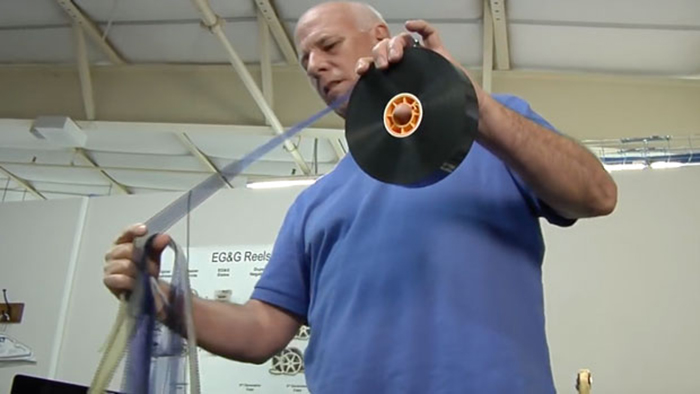Ensuring the safety, security, and effectiveness of the enduring stockpile
LLNL’s foremost responsibility is to ensure the performance of the nation’s nuclear arsenal. The knowledge gained through experiments, theory, and simulations is applied to assess the condition of stockpile weapons and to develop and certify needed modifications with confidence in the absence of additional nuclear tests.
Annual Stockpile Assessment
In FY 2017, LLNL completed Cycle 22 of the annual stockpile assessment. As part of this extensive process, the nuclear design laboratories (Livermore and Los Alamos) conduct peer review of each other’s weapon systems. Laboratory scientists continue to improve the physics and engineering simulation codes that support the annual assessments and weapon certifications. Emphasis is on improving predictability and quantification of uncertainties. Stockpile surveillance activities, weapon subsystem tests, and flight tests supplied critically needed data. For example, the LLNL Independent Diagnostic Scoring System team provided vital support to joint DOE–Department of Defense flight tests. They developed and fielded a one-of-a-kind diagnostic suite to collect in-flight, real-time measurements of system accuracy and performance.
Life-Extension Program Activities
LLNL is partnered with Sandia National Laboratories as the design agencies to develop and certify the W80-4 warhead for the bomber-delivered Long-Range Standoff missile. The Laboratory is making excellent progress in the life-extension program (LEP). The ongoing Phase 6.2 study to extend the stockpile lifetime of the W80 will result in a mature set of requirements and refined cost-conscious design options. One critical need is to qualify and remanufacture additional insensitive high explosives to be used in the refurbished W80-4 warheads. Investments to upgrade aging high-explosives facilities and infrastructure at LLNL’s Site 300 will support this work and a wide range of national security activities.
The design and certification process will require innovations and proficient use of NNSA’s advanced computational and experimental resources. An area of significant innovation is additive manufacturing (AM) to improve the quality and reduce the cost of materials and parts for weapons undergoing LEPs. Hydrodynamic tests fielded in FY 2017 provided confidence in the performance of W80-4 LEP design options that include additively manufactured components.
Preparing for Sierra and Beyond
Sierra, a next-generation supercomputer built by IBM, is being delivered to LLNL in 2017–2018. The machine is expected to provide greater than 120 petaflops (1015 floating-point operations per second) peak performance—four to six times that of Sequoia, currently LLNL’s most capable supercomputer. Sierra’s procurement for NNSA’s Advanced Simulation and Computing (ASC) Program is part of the DOE-sponsored CORAL (Collaboration of Oak Ridge, Argonne, and Lawrence Livermore national laboratories) initiative to accelerate the development of high-performance computing (HPC). CORAL is also providing a strong foundation for NNSA and the DOE Office of Science to pursue DOE’s Exascale Computing Project, in which Livermore researchers lead several key efforts (see Science and Technology).
In September 2016, LLNL took delivery of Sierra “early-access” systems. Researchers have been using these systems to prepare nuclear-weapons simulation codes so that they take advantage of the performance improvement offered by graphics processing units (GPUs), a prominent feature of the Sierra machine. Originally developed for video games and graphics design, GPUs present significant challenges to existing ASC simulation codes, which were developed to run on central processor units. For selected codes, LLNL computer scientists are now achieving substantial performance speedups—10 times faster on a per-node basis. Initial results were about a factor of 100 slower.
Stockpile Stewardship Experiments
Livermore successfully executed its work in the FY 2017 National Hydrodynamic Test Plan, carrying out experiments to mature technologies with potential use in LEPs and improve predictive capabilities that underpin all facets of stockpile stewardship. The Flash X-Ray (FXR) radiography machine, used in hydrodynamic experiments at Livermore’s Site 300, successfully conducted its first double-pulse imaging experiments. This enhanced capability enables researchers to follow the time evolution of the implosion process. Laboratory researchers also conducted hydrodynamic tests to prepare for fielding a series of subcritical experiments at the Nevada Nuclear Security Site that will provide important data about how a plutonium bomb core implodes. The preparatory tests are providing absolute assurance that the plutonium will remain subcritical and that materials will be safely contained.
Experiments at the Joint Actinide Shock Physics Experimental Research (JASPER) Facility and the National Ignition Facility (see NIF) provide essential data about plutonium. Work at JASPER included developing new capabilities to gather data in unexplored lower pressure regimes. In addition, LLNL researchers and NNSA collaborators have for the first time taken 3D snapshots of operating high-explosive detonators. The experiments, performed at Argonne National Laboratory’s Advanced Photon Source, are important for assessing aging effects on detonator safety and performance and for developing new and improved designs.







